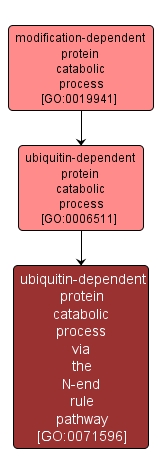| Desc: |
The chemical reactions and pathways resulting in the breakdown of a protein or peptide covalently tagged with ubiquitin, via the N-end rule pathway. In the N-end rule pathway, destabilizing N-terminal residues (N-degrons) in substrates are recognized by E3 ligases (N-recognins), whereupon the substrates are linked to ubiquitin and then delivered to the proteasome for degradation. |














